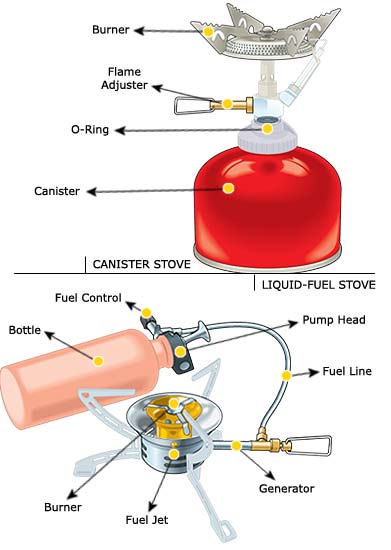听•听 Canister stoves use a blend of propane, normal (n-) butane, and isobutane in pressurized cylinders. They’re dead easy to use: Screw the canister to the stove, open the valve, and light.
听•听 Canister stoves are light and compact, so they’re ideal for weight-conscious camping. Models that mount directly on top of canisters offer less stability than those with a fuel line that connects to a remote cartridge.
听•听 It used to be impossible to tell how much fuel remained in your canister. Now the Brunton “Gas Gauge”—a $5 stick-on that works with any cartridge—will give you a good idea.
听•听 Liquid-fuel stoves draw their gas from refillable aluminum bottles. Key advantage: You always know how much gas you have left.
听•听 Pressurized by pumping air into the fuel bottle, liquid fuel is forced through the fuel line and into the generator, an extension of the line that runs to the stove’s burner. Here the liquid is vaporized to create the “jet” of gas. To start this process, you first have to prime the system by running some fuel into the burner and lighting it, thus heating the generator.
听•听 Stoves with two valves—a fuel control on the bottle and a flame adjuster near the burner—offer the best simmering capability.
听•听 Some stoves burn a plethora of petroleum products, from the usual white gas to regular unleaded, kerosene, and even diesel. These fuels won’t burn quite as well—or as cleanly—as the purer white gas, so you’ll have to clean your stove more often.
Camp Stoves Explained
Trail mix is for hippies. To really satisfy your backcountry appetite, bring on the BTUs.

New perk: Easily find new routes and hidden gems, upcoming running events, and more near you. Your weekly Local Running Newsletter has everything you need to lace up! .
